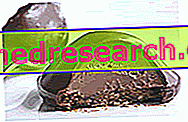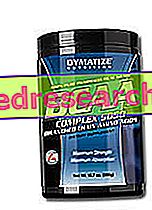Diet as a Cause of Headache
According to the experts, even though food cannot and should not be considered the primary cause of headaches, some food-borne substances contribute to exacerbating the symptoms, triggering migraine attacks in predisposed individuals.
Although the diet is far from being a therapy, to keep it under control

The list of "forbidden" foods is actually very long, but it is true that too often it is polluted by urban legends, subjective beliefs and other elements lacking the slightest scientific foundation. Let's see then a list of the foods most frequently called into question in the appearance of headaches:
- Cheeses, especially very seasoned or fermented ones
- Chocolate, cocoa, nuts
- Citrus fruits, tomatoes, sauerkraut, raspberries
- Bananas, avocados, figs, plums
- Hot Dogs and seasoned, canned, preserved or treated meats (sausages, cured meats, salted dry fish)
- Monosodium glutamate (a flavor enhancer contained above all in stock cubes, in soy sauce, in some snacks and in soup preparations; widely used in Chinese restaurants)
- Aspartame (a sweetener), nitrites (preservatives used mainly in cured meats and canned meats) and sulphites (additives present in wines)
- Fatty foods and fries
- Ice cream or other cold foods
- Yogurt and sour cream
- Herring and seafood
- Beverages containing caffeine: coffee, tea, cola-type drinks (over two glasses)
- Caffeine deficiency compared to usual consumption
- Alcoholic beverages, especially red wine and beer
Foods to Avoid
Foods that can promote the onset of headaches are generally custodians of particular substances, equipped with psychoactive and vasoactive actions that also affect the brain. Among these, there are some biogenic amines, such as tyramine, histamine and phenylethylamine, substances from which it is good to stay away if you suffer from headaches.
The important thing, however, is not to generate dangerous alarmisms; too many people, in fact, deprive themselves of suspect foods without having any certainty about their role in the appearance of the disorder they suffer from. Given the widespread use of certain eating habits, now rooted as a recreational tradition (aperitifs, chocolates, ice cream or various snacks), this kind of behavior can even cause a sort of useless and dangerous social marginalization.
| Substances involved in the onset of headaches, biological actions and foods that contain them | ||
| tyramine | phenylethylamine | Histamine |
vasoconstrictor; increases heart rate; cause lacrimation e salivation, increase in blood sugar and migraine | Release noradrenaline; increases the pressure blood; causes migraine | Free adrenaline and noradrenaline; stimulates the smooth muscles of the uterus; stimulates motor and sensory neurons; controls gastric secretion; causes pseudo-allergic reactions |
| They are rich: | They are rich: | They are rich: |
Seasoned cheeses Yogurt Seasoned, canned, preserved meat and fish or treated Red wine or beer Soy sauce, miso, tempeh | Cheese Chocolate and cocoa Citrus fruits Raspberries, fruits of wood Red wine | Banana Beef, pork Beer and red wine Cheeses, especially seasoned ones Chicken liver Fish, molluscs Cured meat Sauerkraut Tempeh, tofu, miso, Tamari Spinach, tomatoes, including sauces and purée Yeast and foods that contain it (cakes, bread) Pineapple, citrus fruits, chocolate |
Importance of Experimentation
Even if the migraine problem cannot be solved at the table, the exclusion or limitation of certain foods can contribute to contain it. With the supervision of a doctor, it is therefore useful to undertake a thorough food plan, eliminating a few foods at a time and noting down the foods consumed, meal times and their repercussions on the disorder in your diary. Staying away from all the products listed in the article would be a too arduous and in some ways useless enterprise, because it does not help to understand if and which of these are involved in the initiation and strengthening of headaches.
When the exclusion of a given food for a few weeks does not lead to significant benefits, this can be reintegrated into the diet, at the same time removing another suspicion.
Since fluctuations in blood glucose concentration (hypo or hyperglycemia) can act as an inducer, it is good to consume small and frequent meals, avoiding prolonged fasting. Knowing how to listen and proceed by trial and error is therefore important: an annoying headache upon waking up could, for example, be the cause of a dinner consumed too early compared to a night's rest.
To be considered, moreover, that, very often, in the prodromal phase, that is, in that period in which premonitory symptoms of the subsequent migraine attack appear, there is a strong desire for certain foods, such as chocolate. Their consumption, in these cases, is unjustly found guilty of an attack that in reality had already begun, manifesting itself with an irresistible need for that particular food. Learning to recognize similar circumstances is very useful, because it allows you to intervene with an early and effective treatment.
Finally, it is good to remember that many other behavioral factors such as stress, fasting (skipping meals or delaying them: those who do not have breakfast, for example, are more prone to migraine attacks in the late morning), dehydration, caloric deprivation, exposure to light sources, atmospheric changes, intense and prolonged physical effort, penetrating odors, irregular rest (excessive or insufficient) and various emotional factors may be involved in the onset of headache.



